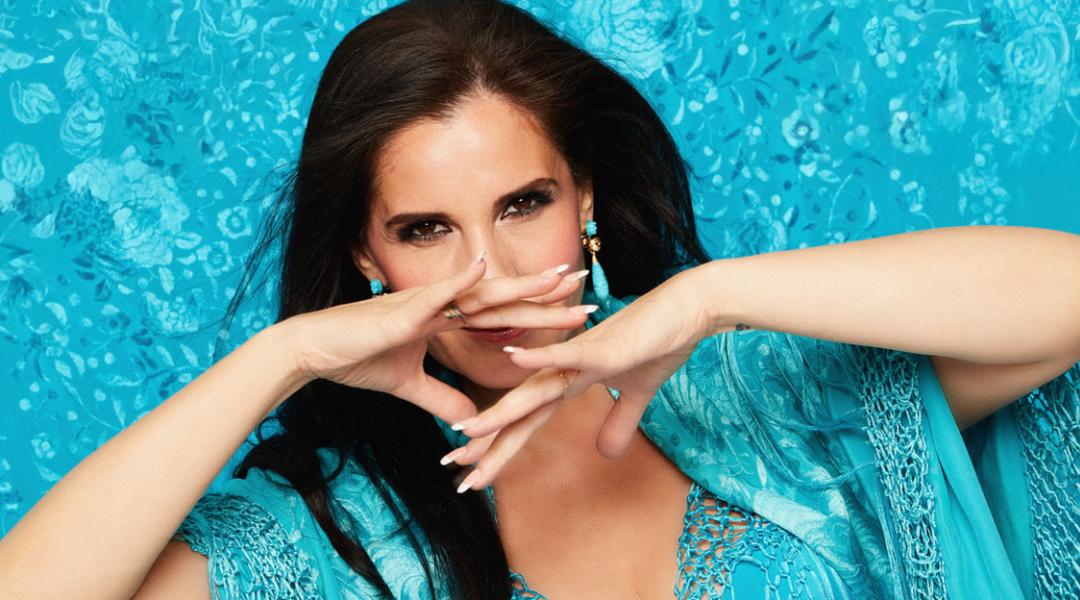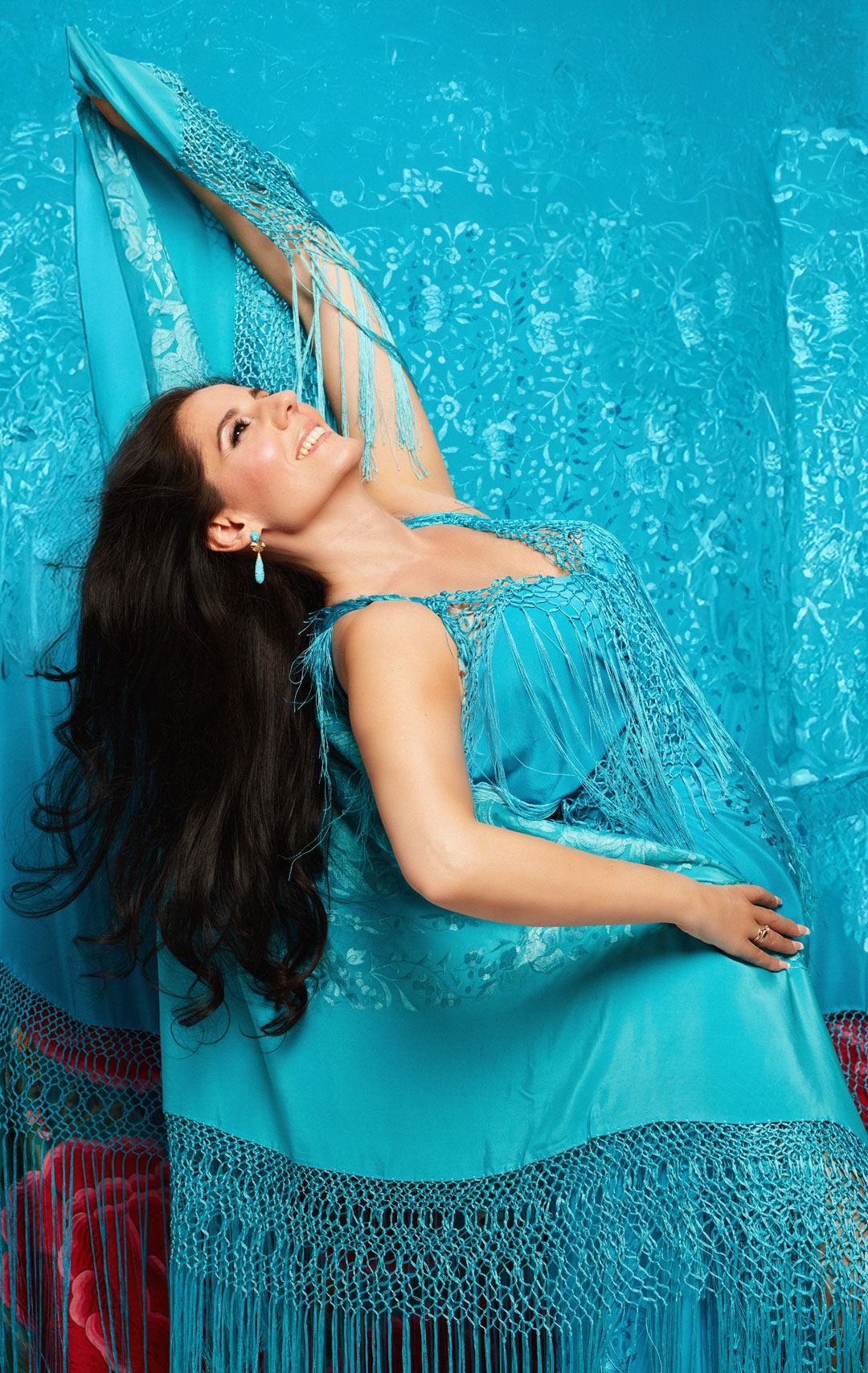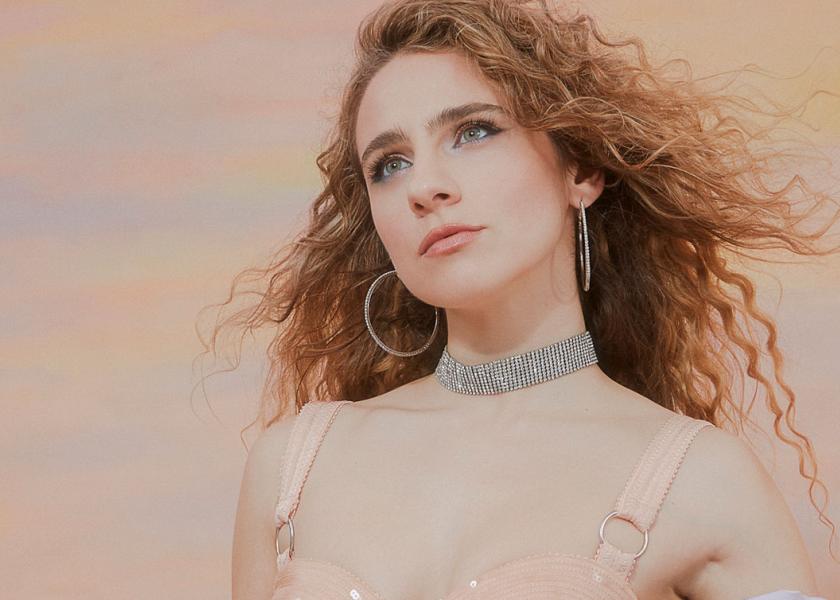Diana Navarro
In style

On a unique stage, at Teatro Real, and alongside a symphony orchestra, a flamenco troupe and dozens of guests, Diana Navarro celebrates the 20th anniversary of her first album: ‘No te olvides de mí’. On the evening of the 6th of April, “symphonic-electronic flamenco neocopla”, as she called her unmistakable style, will rock her crowd of fans. A dream come true for this artist.
The appearance of Diana Navarro (Málaga, 1978) on the Spanish music scene was dazzling. With her first album, No te olvides de mí (2005), she received the support of both the audience, with more than 200,000 copies sold, and critics, with a nomination for the Latin Grammy Award for Best New Artist, as well as winning the Ondas Award in the same category. Behind this success, there has been a lot of work behind the scenes, Diana reminds us: “They were 10 years of hard work, knocking on doors, playing at clubs, associations, charity galas... During that time, I understood that success doesn’t happen overnight and if it did come, I was lucky. And that’s how I experienced it when it finally came.” This is why her vision of talent is intrinsically connected to hard work: “I believe talent is a gift from God and that you have to work hard daily on Earth, with absolute discipline and respect.” The concert that Diana is going to celebrate the 20th anniversary of her first album with is called Ya no estoy sola, and at Teatro Real she will be accompanied by all those people—her family, her friends, and her fans— who helped her overcome the toughest moments in her career: “When you’re not emotionally ready, this fierce industry uses it against you. I was unlucky to run into mean-spirited people, but also lucky in a way, because thanks to them, I learnt a lot, and I am the person I am today.”
You’re going to go over your greatest hits on the best stage possible. What does playing at Teatro Real mean to you?
It’s a dream. The first time I played there was in 2013 with a copla show, Azabache, which paid homage to the one performed at the Expo ‘92 in Seville. When I stepped onstage, I thought: “One day, I want to come here by myself.” Now that I’m an independent artist, an indie copla singer (laughs), I’ve decided to invest my savings in making that dream come true. I’m going to be with a symphony orchestra and a flamenco troupe to sing copla, saeta, flamenco, zarzuela, electronic music... Also, since I started acting, I like to add narrative to my concerts.
Despite being onstage for so many years, how do you feel in the moments before such an important performance? Do you still get nervous?
Nerves are always there. Also, this week [this interview is held on the 28th of March], we’ve had rehearsals and when I see how the performance takes shape and that the date is approaching, I can’t help getting emotional. I’m exhausted because rehearsals are always tiring, but I think it’s going to be an incredibly special moment. We’re about to sell out, and I’m thrilled.
“Talent is a gift from God, and you have to work hard daily on Earth, with absolute discipline and respect”
The concert is called Ya no estoy sola [I’m no longer alone]. Looking back, who have been your main travel companions? Who will you remember?
My father because I was unlucky to lose him two years ago. The rest of my family will be there in full: they always believed in me, even when this music gig was nothing more than a teenage pipe dream. I was lucky to make this dream come true, and they are very proud of me (and I of them). I will also remember my friends, who are my chosen family, and, of course, those who have been with me since the beginning. I always joke about this and say that I have my followers registered in a census, that I know almost all of them. I feel deeply moved by the fact that they have supported me for 20 years, by purchasing my tickets and investing in culture. It’s a joy because, without them, I wouldn’t be able to dedicate my life to what I love.
Tell me which was the soundtrack of your childhood and if it awoke your passion for flamenco, copla, and zarzuela.
My first sound memory goes with the smell of freshly baked bread as you go into Jaén. And I say going into Jaén, considering I’m from Málaga, because that was the first stop we made on our way to Albacete when we went to visit my mother’s family. I’m the youngest of five brothers, I’d be lying on top of them in the back of our Renault 12, and I’d wake up to the smell of bread and listen to La leyenda del tiempo by Camarón. At the tender age of five, I’d wake up to that soundtrack. We also used to listen to Los Chichos, Farina, Molina, Valderrama...

Diana Navarro will play alongside a symphony orchestra and a flamenco troupe at Teatro Real. © Salva Muste
And who did you look up to when you dreamt of becoming an artist? Who were your role models?
One of my first role models was Alaska, because La bola de cristal left a mark on me. Imagine Málaga in 1984 and me dressed up as Alaska. My mother had to dress me up like her, in those dresses, those tights, those heels... Then, when I discovered copla at the age of 14, women like Rocío Jurado, Marifé de Triana, or Concha Piquer became my role models.
You’re the creator of symphonic-electronic flamenco neocopla; is there anything left for Diana Navarro to explore?
I have to keep learning until I die, and I have to try cuplé, which I haven’t touched yet. I also need to keep diving into our folklore, our traditional songs. The fandango, jota, verdiales... were the people’s way of communicating and I like that because it sends a much-needed message of fellowship. There’s work to be done to make traditional Spanish music better known and for young people to see the tool of liberation of their elders; at a time when people couldn’t talk, they sang.
“Music is a balm that the soul needs to feel good and ‘Resiliencia’ was an album that healed me, but also the many people who have listened to it”
What message would you send to those who consider copla a genre from another time? How would you invite them to come closer to it?
They should come to see me! Completely self-serving (laughs). And then they can decide if they like it or not, because copla is similar to opera in that sense: you either connect with it or not. How it is performed also has an impact, and I try to sing copla in my own style while telling its story. Many people associate copla with Francoism, and it has nothing to do with it. I’m sure they’ve heard a family member sing copla by Rafael de León, one of the best poets we’ve had in Spain. It’s worth knowing where we come from to know where we’re going and, while we’re at it, honour our elders. Copla is timeless poetry.
You confessed that Resiliencia was a therapeutic album. Does music have the ability to heal?
Yes, singing healed me. My artistic being saved me because my personhood hadn’t been built; I lacked self-esteem, I’d put on my artist costume and push forward. My personal process culminated with Resiliencia (2016), but started with the album Flamenco (2011) because from then onwards, I felt like I was perfect simply for being. We’re all perfect just as we are, even though we sometimes don’t feel that way. Success came to me suddenly and at the time people didn’t talk much about these things—now we do, thank God— and for an artist who was closer to being a girl than a woman, it was hard. Music is a balm that the soul needs to feel good and Resiliencia was an album that healed me, but also the many people who have listened to it.


